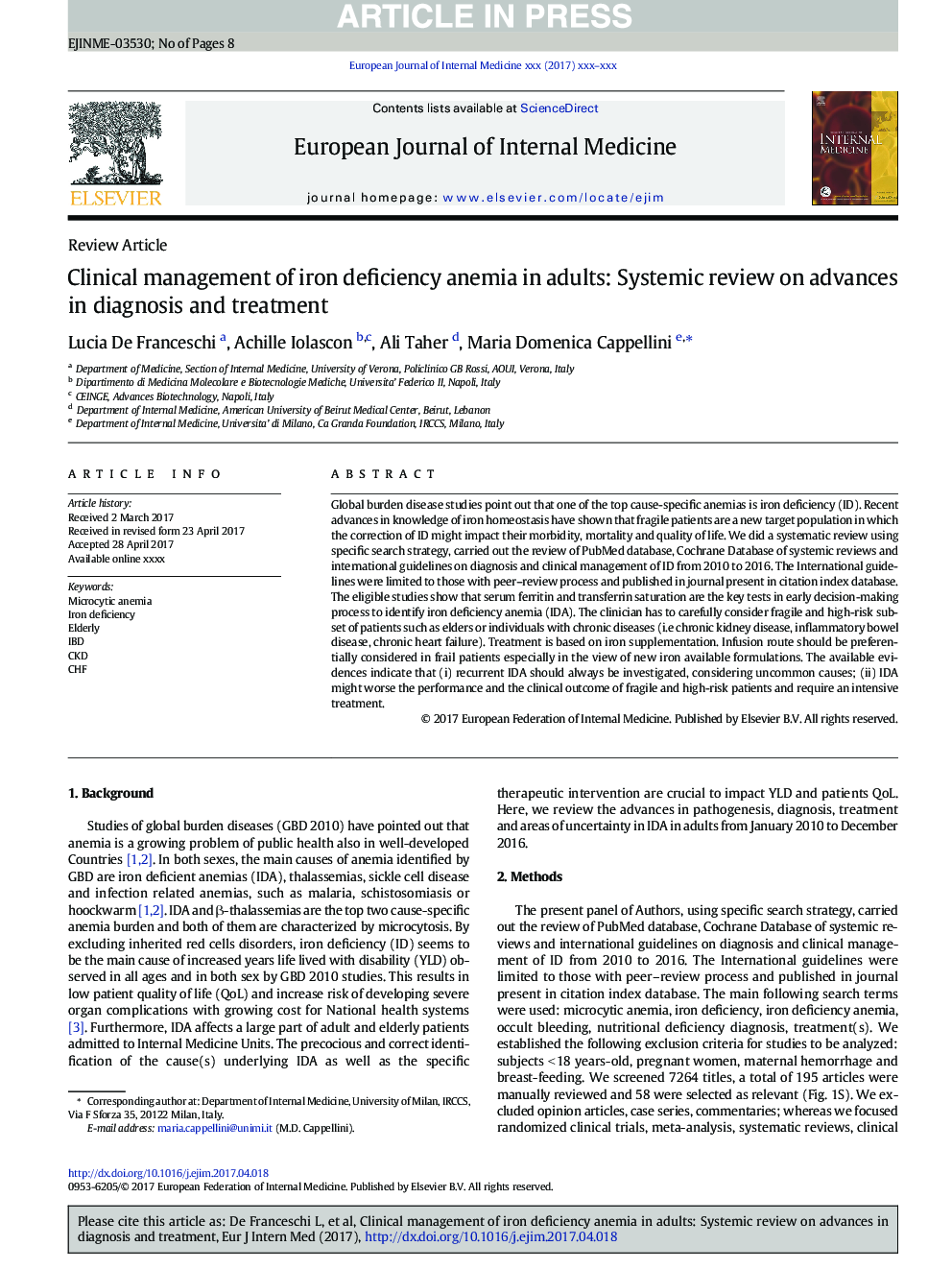| Article ID | Journal | Published Year | Pages | File Type |
|---|---|---|---|---|
| 5678905 | European Journal of Internal Medicine | 2017 | 8 Pages |
Abstract
Global burden disease studies point out that one of the top cause-specific anemias is iron deficiency (ID). Recent advances in knowledge of iron homeostasis have shown that fragile patients are a new target population in which the correction of ID might impact their morbidity, mortality and quality of life. We did a systematic review using specific search strategy, carried out the review of PubMed database, Cochrane Database of systemic reviews and international guidelines on diagnosis and clinical management of ID from 2010 to 2016. The International guidelines were limited to those with peer-review process and published in journal present in citation index database. The eligible studies show that serum ferritin and transferrin saturation are the key tests in early decision-making process to identify iron deficiency anemia (IDA). The clinician has to carefully consider fragile and high-risk subset of patients such as elders or individuals with chronic diseases (i.e chronic kidney disease, inflammatory bowel disease, chronic heart failure). Treatment is based on iron supplementation. Infusion route should be preferentially considered in frail patients especially in the view of new iron available formulations. The available evidences indicate that (i) recurrent IDA should always be investigated, considering uncommon causes; (ii) IDA might worse the performance and the clinical outcome of fragile and high-risk patients and require an intensive treatment.
Related Topics
Health Sciences
Medicine and Dentistry
Medicine and Dentistry (General)
Authors
Lucia De Franceschi, Achille Iolascon, Ali Taher, Maria Domenica Cappellini,
